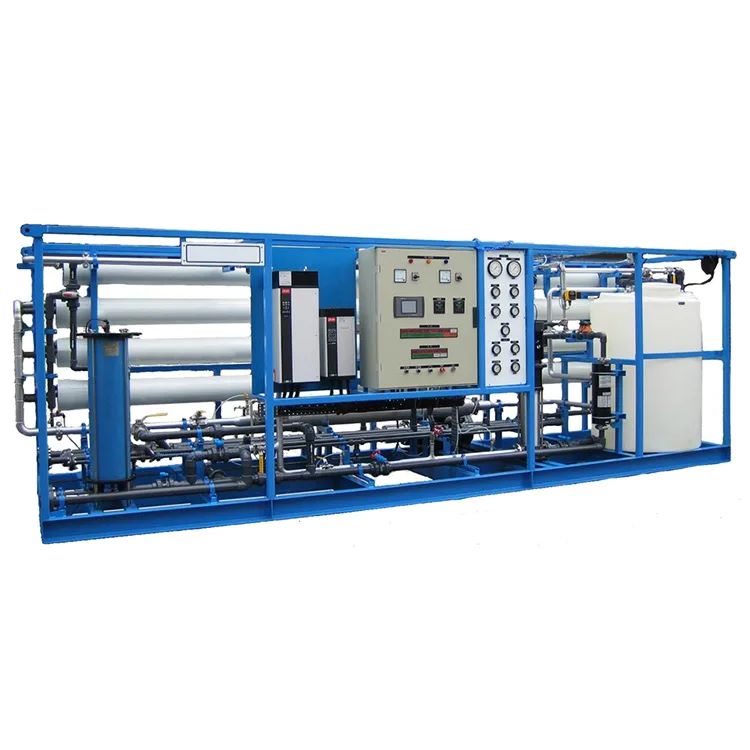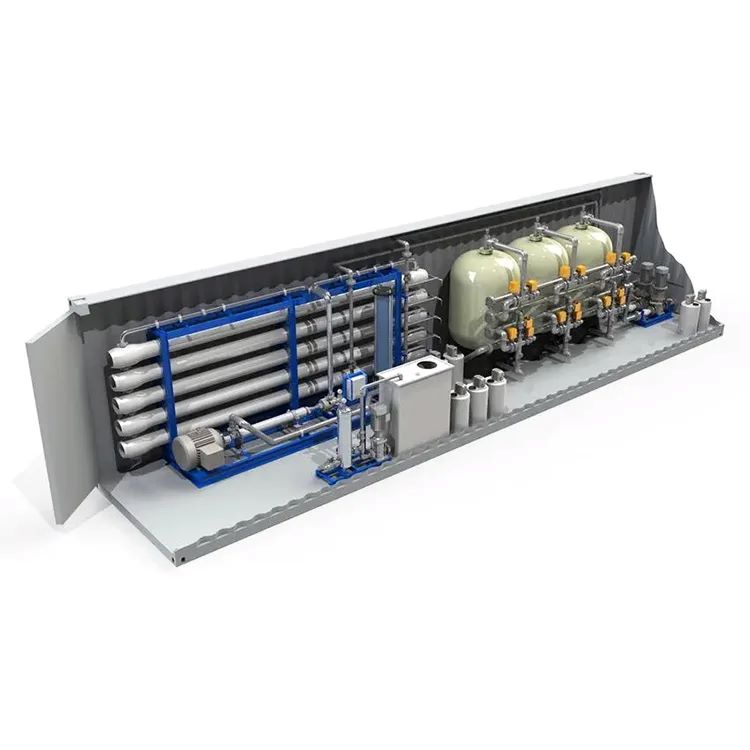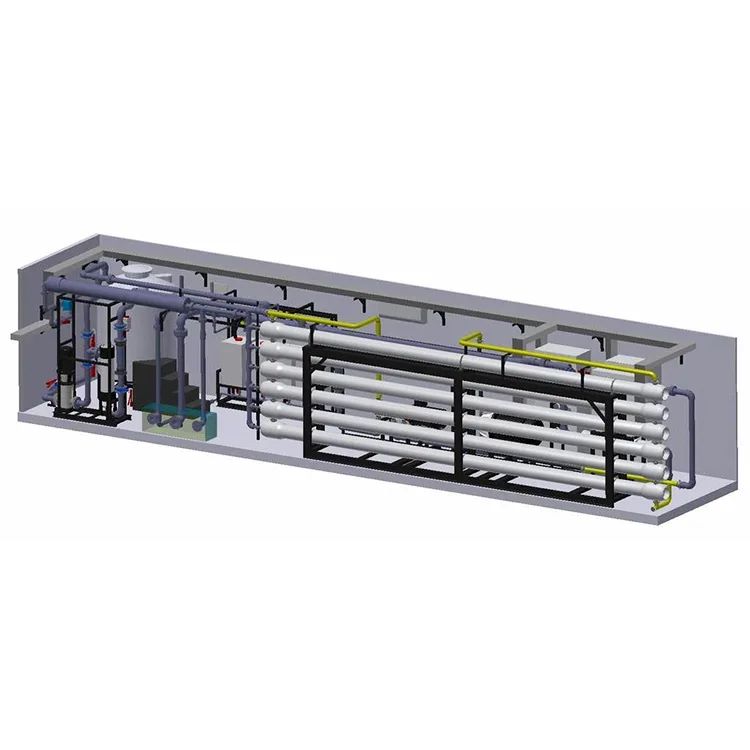How Seawater Desalination Equipment Ensures Reliable Freshwater Supply: Key Benefits
As the global demand for clean water continues to rise, seawater desalination equipment has emerged as a crucial solution for addressing water scarcity. Desalination technology transforms seawater into potable water by removing salt and other impurities, providing an alternative freshwater source to regions with limited access to traditional water supplies. In this blog, we’ll explore the key benefits of seawater desalination equipment, its innovative features, and how it ensures a reliable supply of freshwater.

1. Ensuring Consistent Freshwater Availability
One of the most significant benefits of seawater desalination equipment is its ability to provide a consistent freshwater supply, regardless of geographical location or climate conditions. Many coastal areas experience water shortages due to limited natural freshwater resources or unpredictable rainfall patterns. Desalination systems can harness the vast oceans, transforming seawater into drinkable water, and effectively mitigating the risks associated with freshwater shortages.
By relying on seawater, regions no longer depend solely on natural sources like rivers or lakes, which may dry up due to seasonal fluctuations or long-term droughts. This independence from weather conditions ensures a steady, reliable flow of water to meet the needs of households, agriculture, and industry.
2. Advanced Filtration Technology
Modern seawater desalination equipment incorporates advanced filtration technologies, such as reverse osmosis (RO) and multi-stage flash distillation, to efficiently remove salt and contaminants from seawater. These systems are highly effective in filtering out dissolved salts, bacteria, and other impurities, ensuring that the resulting water meets drinking quality standards.
Reverse Osmosis (RO): This technology uses a semi-permeable membrane to filter out salt and other impurities. High-pressure pumps force seawater through the membrane, allowing only water molecules to pass through while trapping contaminants. RO is one of the most widely used and energy-efficient methods of desalination, producing high-quality freshwater with minimal energy consumption.
Multi-Stage Flash Distillation (MSF): MSF uses a thermal process to evaporate seawater and condense the vapor back into liquid, leaving the salt behind. This method is ideal for large-scale desalination plants and is known for its reliability and ability to produce significant volumes of water.
With these advanced technologies, seawater desalination equipment can achieve salt rejection rates of up to 99%, making it possible to produce water that is safe and suitable for consumption.
3. Energy Efficiency and Sustainability
Desalination used to be considered an energy-intensive process, but recent advancements in seawater desalination equipment have significantly improved energy efficiency. Modern systems are now designed with energy recovery mechanisms, reducing the power required to operate desalination plants.
Energy Recovery Devices: By capturing and reusing the energy generated during the desalination process, such as pressure energy from brine waste, desalination equipment can reduce operational costs and energy consumption. This improvement makes desalination a more viable solution for large-scale freshwater production.
Solar-Powered Desalination: In regions where sunlight is abundant, solar-powered desalination systems are gaining popularity. These systems use solar energy to power the desalination process, making them an environmentally friendly option that reduces dependence on fossil fuels and minimizes the carbon footprint.
With a focus on energy efficiency and sustainability, modern seawater desalination equipment offers a greener approach to solving water scarcity problems.

4. Scalability for Different Needs
Seawater desalination equipment is available in a variety of sizes and capacities, making it suitable for a wide range of applications. Whether you need a small unit for a private residence, a medium-sized system for a coastal community, or a large-scale plant for an industrial complex or city, there is a desalination solution to fit your needs.
Portable Desalination Units: Portable desalination systems are perfect for individuals, boats, or remote locations where traditional freshwater sources are unavailable. These compact units can be easily transported and provide freshwater on demand.
Municipal and Industrial Desalination Plants: For larger-scale operations, municipal and industrial desalination plants can supply thousands of gallons of fresh water daily, supporting agricultural operations, industrial manufacturing, and urban water supplies.
This scalability ensures that seawater desalination can be adapted to meet the specific freshwater demands of different sectors and regions, contributing to the overall resilience of water supply systems.
5. Emergency Water Supply During Crises
Seawater desalination equipment can play a vital role in ensuring access to clean water during emergencies, such as natural disasters or prolonged droughts. In times of crisis, freshwater sources may become contaminated, inaccessible, or severely depleted. Desalination provides an immediate and reliable alternative for producing potable water in such emergencies.
Portable desalination units can be quickly deployed to areas in need, offering a critical lifeline in disaster-stricken regions. Whether it’s in the aftermath of a hurricane, earthquake, or severe drought, desalination systems can help restore access to clean drinking water, ensuring the safety and well-being of affected populations.
6. Enhancing Water Security
In a world where water scarcity is becoming increasingly common, seawater desalination equipment offers a reliable solution to enhance water security. By tapping into the vast and inexhaustible resource of seawater, countries and regions prone to water stress can secure their water supply, reduce their reliance on imported freshwater, and become more resilient to environmental and political challenges.
For many coastal cities and countries, desalination serves as a strategic investment in their long-term water infrastructure, ensuring that they can meet growing water demands from expanding populations and industries.
7. Minimal Environmental Impact
While early desalination technologies were criticized for their environmental impact, especially in terms of energy consumption and brine disposal, new advancements have made significant strides in mitigating these concerns. Modern desalination plants are designed with eco-friendly features that minimize the environmental footprint:
Brine Management: Innovative brine disposal methods, such as dilution techniques and eco-friendly disposal systems, reduce the potential impact on marine ecosystems. The concentrated brine produced as a byproduct of desalination is managed responsibly to prevent harm to aquatic life.
Reduced Chemical Use: Many desalination systems now use environmentally safe chemicals or opt for chemical-free pre-treatment processes, minimizing the introduction of harmful substances into the environment.
Through careful design and improved processes, seawater desalination equipment now aligns better with global sustainability goals.
Conclusion
Seawater desalination equipment is an essential technology that ensures a reliable supply of clean freshwater in a world facing increasing water scarcity. With advanced filtration technologies, energy-efficient designs, and the flexibility to scale for different applications, these systems provide a dependable solution for coastal cities, industries, and even emergencies.
By transforming seawater into a renewable freshwater source, desalination equipment helps secure the future of water supplies, reduce reliance on traditional freshwater sources, and enhance water security for millions of people worldwide. The ability to provide consistent, high-quality freshwater is just one of the many reasons why desalination will continue to play a crucial role in meeting global water challenges.








